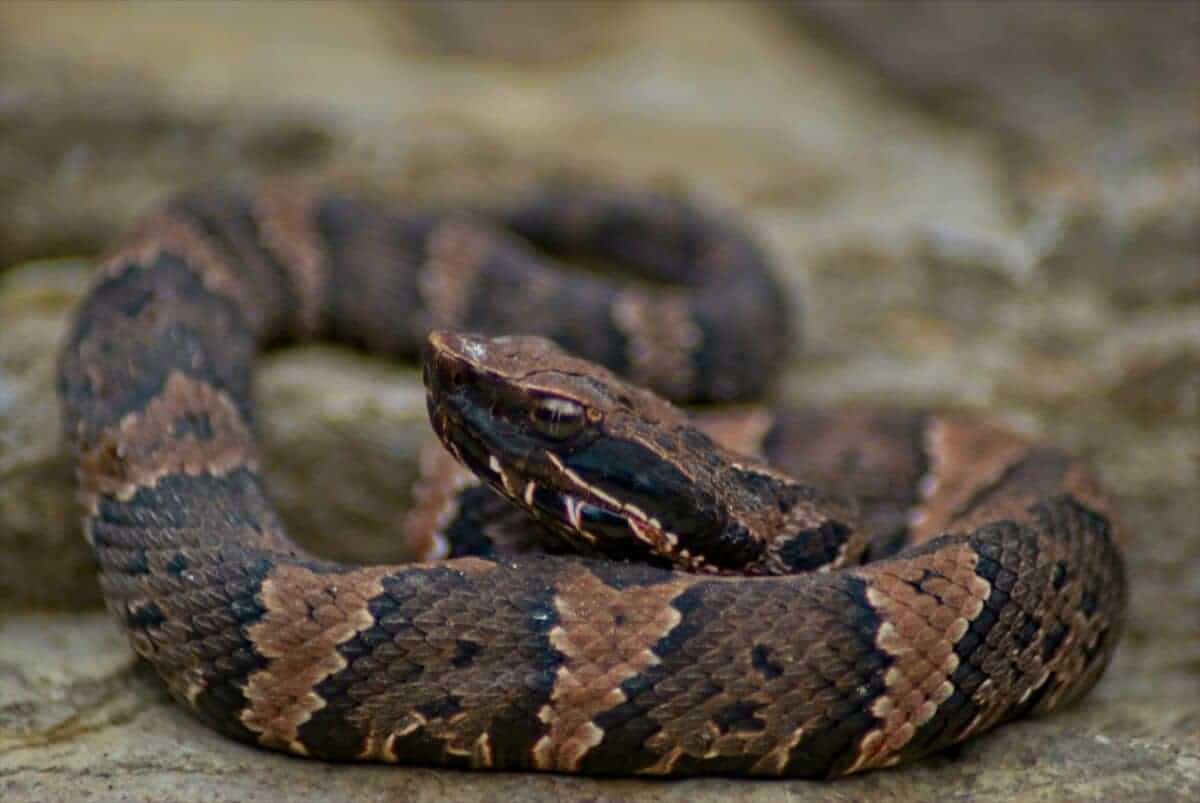Water moccasin bites are a serious health risk for individuals who live in or visit the southeastern United States. These venomous snakes, commonly known as cottonmouths, can pose a danger to anyone who comes into contact with them. It is important for individuals to understand the risks associated with water moccasin bites and to take the necessary actions in the event of a bite.
Water moccasin venom triggers pain, swelling, and discoloration at the bite. Severe cases bring nausea, vomiting, and breath struggles. Swift treatment is vital to avoid complications or death. Prevent bites by wearing protective gear in their habitats and respecting their space to stay safe.
Understanding the Water Moccasin
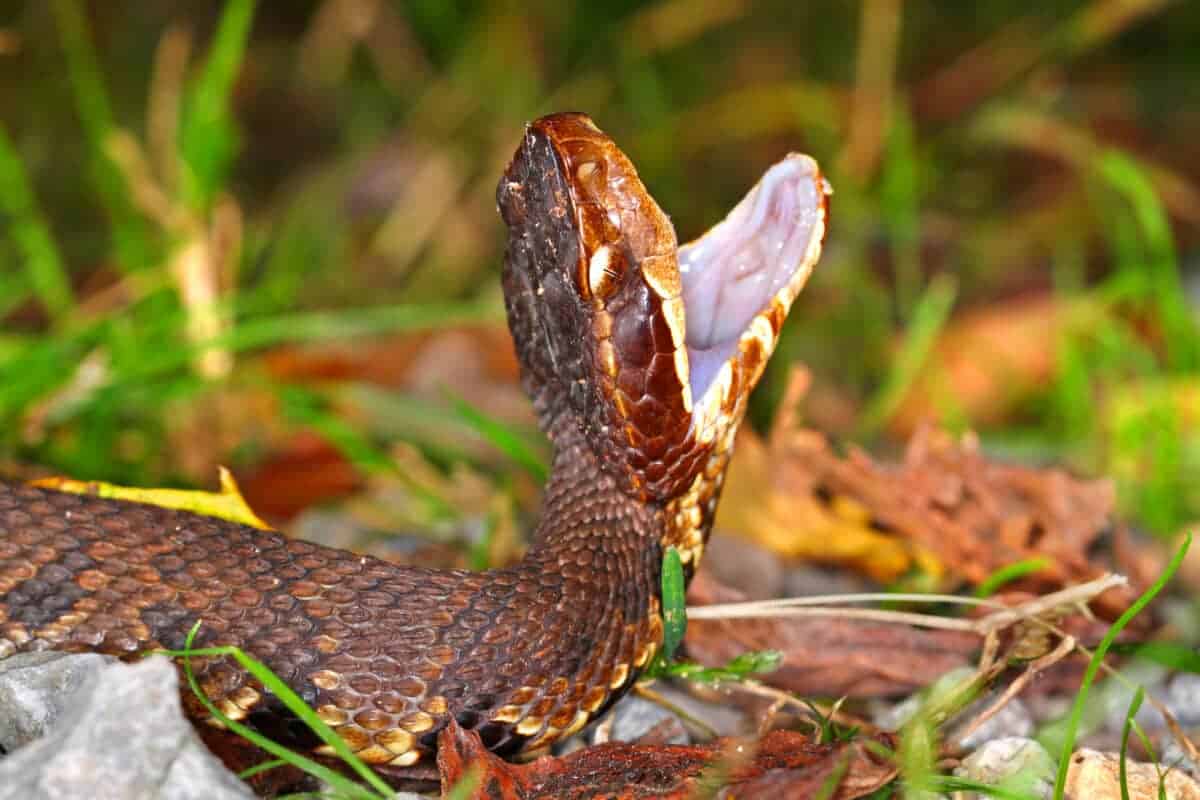
The water moccasin, or the cottonmouth, is a venomous snake found primarily in the southeastern United States. They are semi-aquatic, meaning they prefer to live near water and are excellent swimmers. Their preferred habitats include swamps, marshes, and other wetlands.
Water moccasins have a distinctive appearance, with dark, olive-brown bodies and broad, triangular heads. They can be easily identified by the white or cream-colored lining of their mouths, which they display when threatened or disturbed. Adult water moccasins can grow up to 4.5 feet long, making them one of the largest venomous snakes in North America.
Despite their generally docile nature, water moccasins are considered dangerous due to their venomous bite. Their venom contains hemotoxins and neurotoxins that can cause various symptoms, including pain, swelling, tissue damage around the bite site, nausea, vomiting, and difficulty breathing. In severe cases, a water moccasin bite can be fatal.
It is essential for individuals living in or visiting areas where water moccasins are known to inhabit to understand the risks associated with these snakes and to take the necessary precautions to avoid encounters with them; This includes remaining aware of one’s surroundings, wearing protective clothing and footwear when in known habitats, and seeking immediate medical attention in the event of a bite.
Signs and Symptoms of a Water Moccasin Bite
A moccasin bite can cause immediate effects, including pain, swelling, and discoloration around the bite site. Other symptoms may include nausea, vomiting, and difficulty breathing. If left untreated, these symptoms can progress to more severe complications, including tissue damage, organ failure, and in rare cases, death.
It is important to distinguish a water moccasin bite from other snakebites, as the symptoms and treatment options may differ. A water moccasin bite often results in a large, swollen wound with two distinct puncture marks, similar to other venomous snakebites. However, the distinctive white or cream-colored lining of the water moccasin’s mouth may also be visible near the bite site, helping to confirm the diagnosis.
Individuals who suspect a water moccasin has bitten them should seek emergency medical attention immediately. Prompt treatment can help minimize the risk of complications and increase the chances of a full recovery.
Immediate Actions After a Water Moccasin Bite
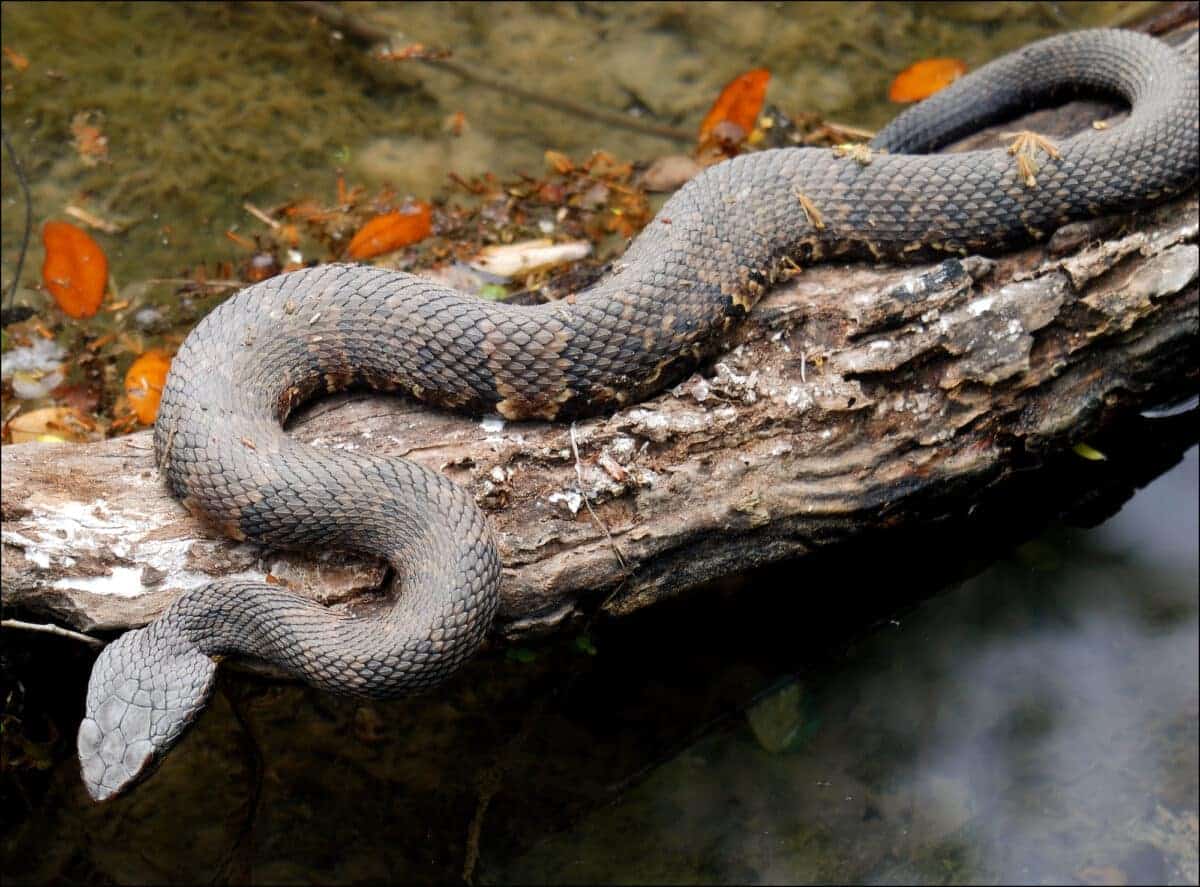
After a water moccasin bite, the most important immediate action is to call for emergency medical assistance. While waiting for help, the victim must remain calm and prevent the venom from spreading more quickly throughout the body. No constricting clothing or jewelry should be near the bite site to avoid further swelling.
Any first aid steps that are considered effective, such as using a tourniquet or trying to suck out the venom, should not be performed. Instead, the victim should be kept as calm as possible to prevent the venom from spreading more quickly. Any attempt to remove the venom can cause more harm than good.
Medical Treatment and Antivenom
Medical treatment for water moccasin bites typically involves antivenom therapy administered in a hospital setting. This treatment can help neutralize the snake’s venom effects and prevent complications. Pain management and wound care are also important for a full recovery.
Antivenom is highly effective in treating water moccasin bites, but it is only sometimes necessary for some cases. The decision to use antivenom depends on the severity of the bite, the patient’s overall health, and other factors.
Delaying treatment can increase the risk of serious complications, such as tissue damage, organ failure, and even death. To ensure the best possible outcome, individuals must follow the recommended medical procedures for treating water moccasin bites, including antivenom administration.
Preventing Water Moccasin Bites
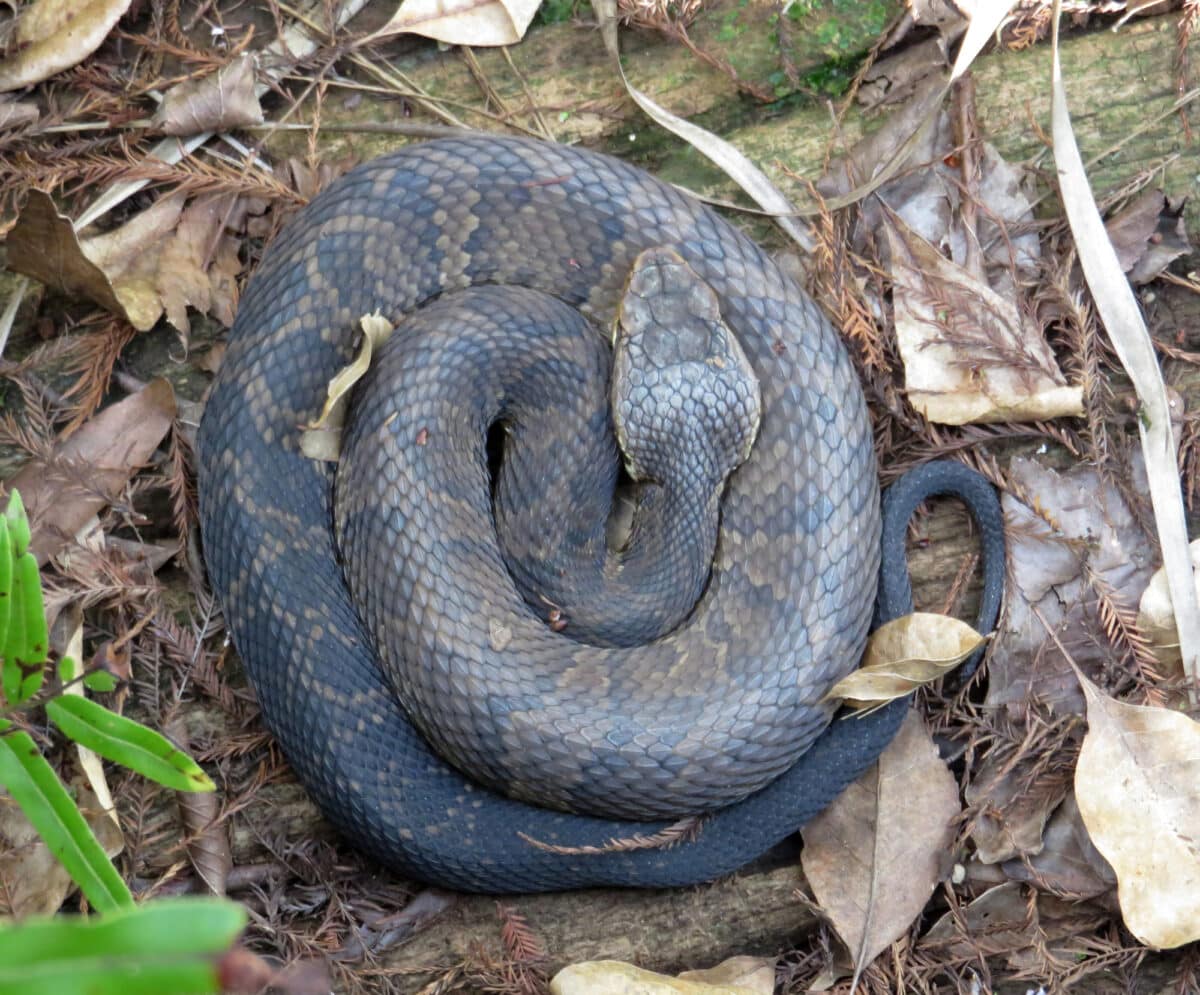
Knowing their habitats and behavior is important to prevent water moccasin bites. Some tips for avoiding encounters with water moccasins include wearing protective clothing and footwear when in known habitats, remaining aware of one’s surroundings, and avoiding disturbing or approaching snakes in their natural habitats.
It is important to take additional safety precautions when in water moccasin habitats, such as swamps and wetlands; This includes staying on established trails and avoiding tall grass or brush where snakes may hide. When near bodies of water, such as lakes or rivers, it is essential to avoid stepping on logs or other objects hiding a water moccasin.
Also, it is important to note that many misconceptions exist about snake behavior, including the belief that all snakes are aggressive and will attack unprovoked. In reality, most snakes, including water moccasins, attack only when threatened or cornered. By remaining calm and aware of one’s surroundings, individuals can reduce the likelihood of a water moccasin bite and increase their chances of a safe and enjoyable outdoor experience.
Frequently Asked Questions
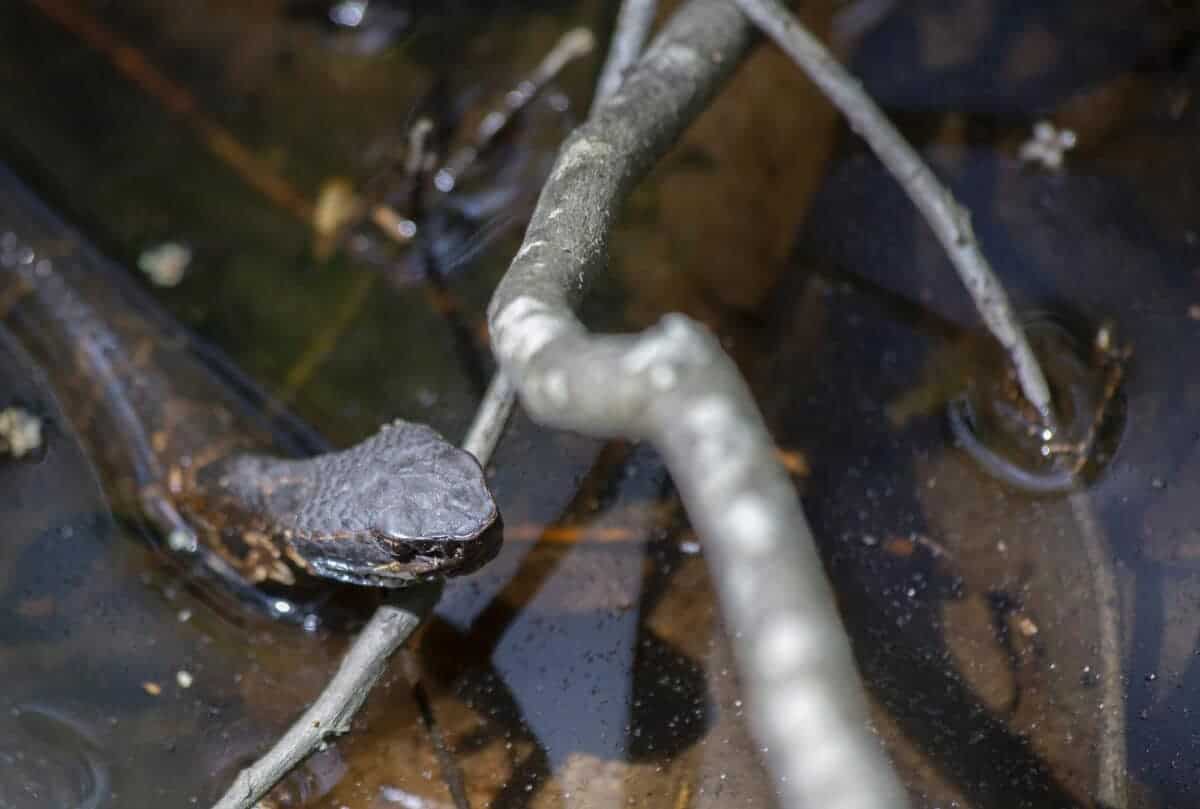
What are the signs and symptoms of a water moccasin bite?
A water moccasin bite can cause immediate pain, swelling, and discoloration around the bite site. Other symptoms may include nausea, vomiting, and difficulty breathing. Without proper treatment, these symptoms can progress to more severe complications.
What immediate actions should be taken after a water moccasin bite?
After a water moccasin bite, the most important immediate action is to call for emergency medical assistance. It is crucial to remain calm and prevent the venom from spreading further. Avoid using tourniquets or attempting to remove the venom, as these actions can be harmful.
How are water moccasin bites treated?
Medical treatment for water moccasin bites typically involves antivenom therapy administered in a hospital setting. Antivenom helps neutralize the snake’s venom effects and prevent complications. Pain management and wound care are also important for a full recovery. Seeking professional medical care immediately is crucial for the best possible outcome.
Key Points
| Topic | The Lethal Bite of the Water Moccasin |
|---|---|
| Overview | Water moccasin bites pose a serious risk in the southeastern US. Understanding the risks and immediate actions in case of a bite is crucial. |
| Venom Symptoms | Bite symptoms include pain, swelling, discoloration, nausea, vomiting, and breathing difficulties. Without quick treatment, serious complications can arise. |
| Preventive Measures | Call for medical help, stay calm, and prevent venom spread. Avoid tourniquets or venom removal attempts. |
| Understanding the Water Moccasin | Venomous, semi-aquatic snakes are found in the southeastern US. Identifiable by appearance and behavior. |
| Signs and Symptoms | Immediate effects: pain, swelling, discoloration. Severe cases: nausea, breathing struggles, tissue damage, organ failure. |
| Immediate Actions After a Bite | Hospital-administered antivenom therapy. Pain management, wound care. Prompt medical care is essential. |
| Medical Treatment and Antivenom | Know habitats, wear protective gear, be aware of surroundings, and avoid disturbances. |
| Preventing Water Moccasin Bites | Know habitats, wear protective gear, be aware of surroundings, avoid disturbances. |
| FAQs | Symptoms of bites, immediate actions, antivenom therapy. |
Conclusion
Water moccasin bites are a serious risk in their habitat. Symptoms include pain, swelling, and discoloration at the bite, escalating to severe issues without proper care.
Preventing bites entails knowing their behavior, using protective clothing, and respecting their space. Swift medical aid is essential if bitten, as antivenom is effective with early treatment.
Educating on prevention and treatment is vital. Stay proactive, ensuring a safer outdoor experience.
Thank you for reading this article! Spend more time with snakes and check out or piece on Chicken Snakes.
- Python vs. Chinese Cobra - April 8, 2024
- Unveiling the Enchantment of Kruger National Park - December 13, 2023
- Animals That Pose a Threat to Humans - November 20, 2023

